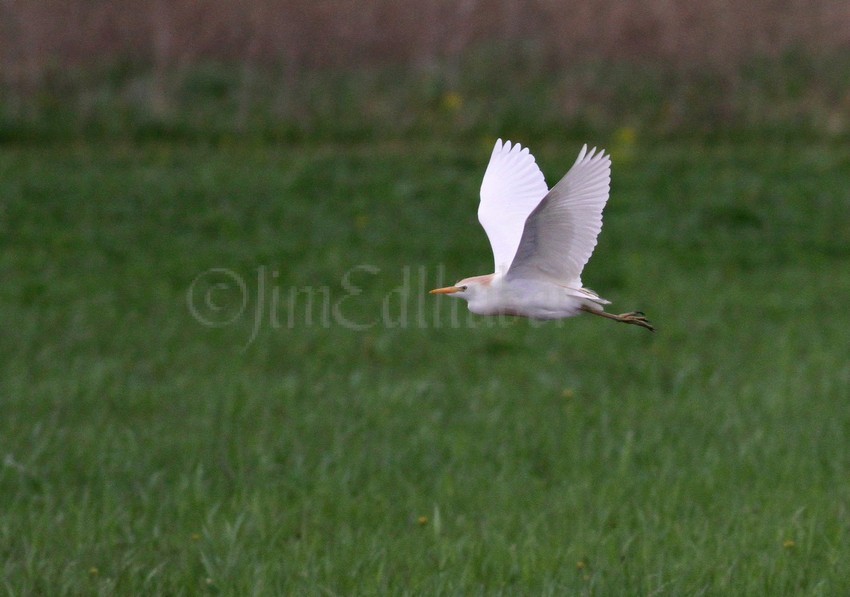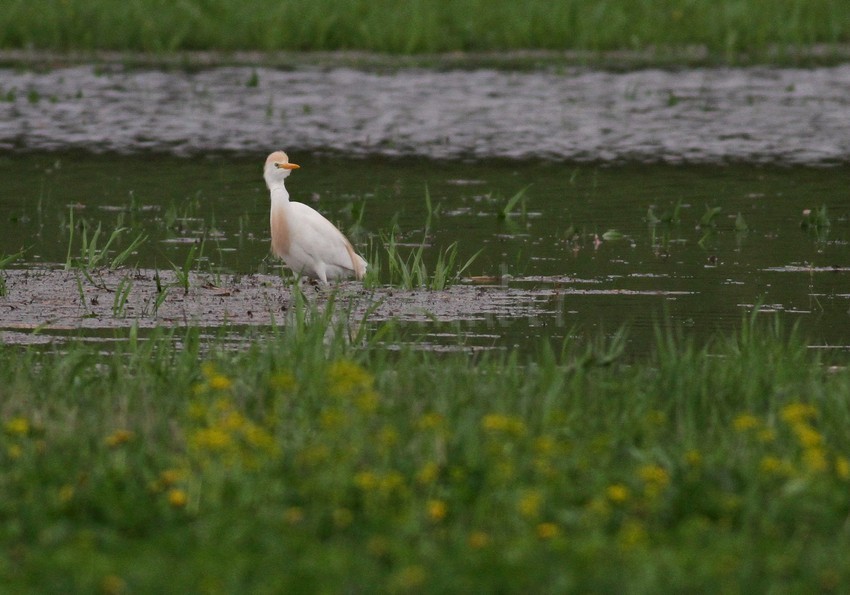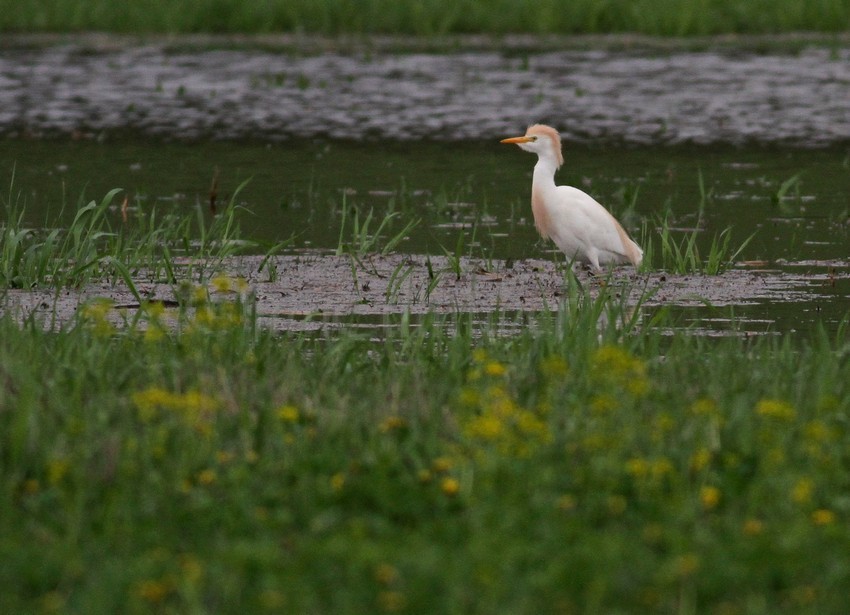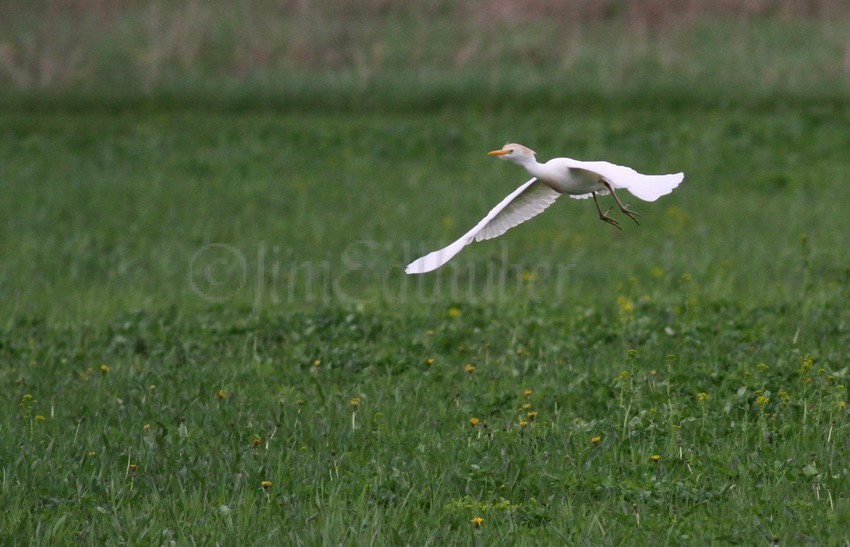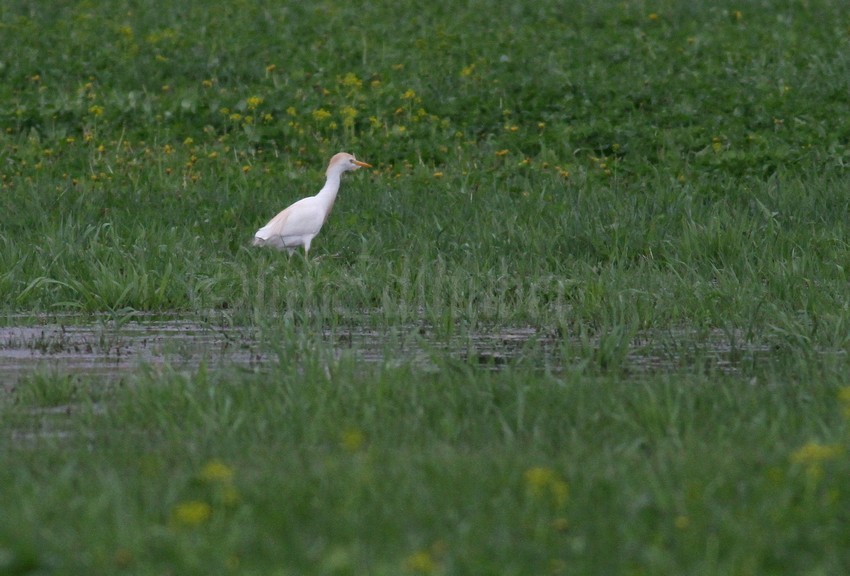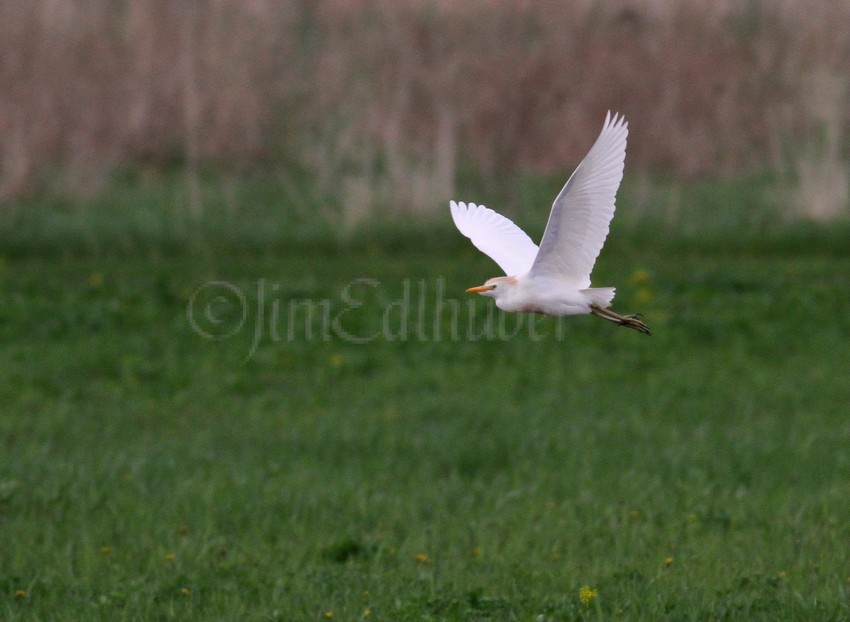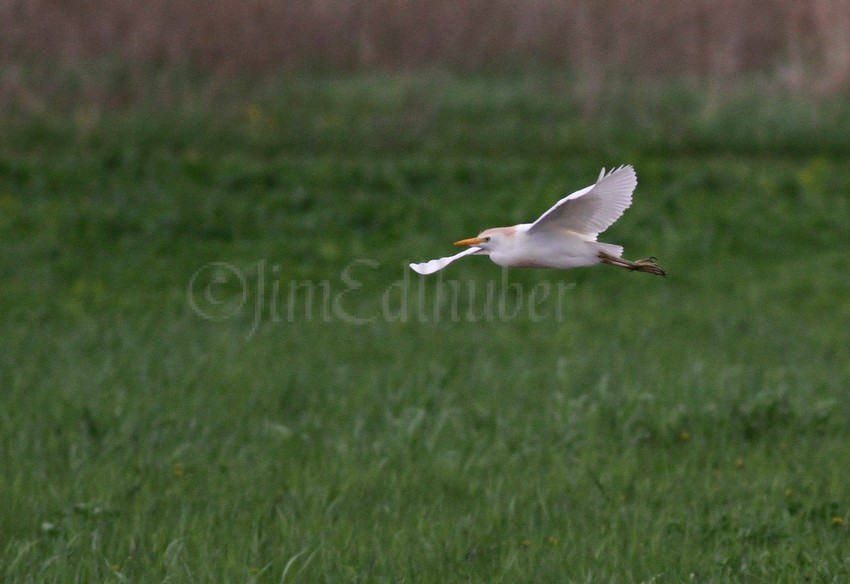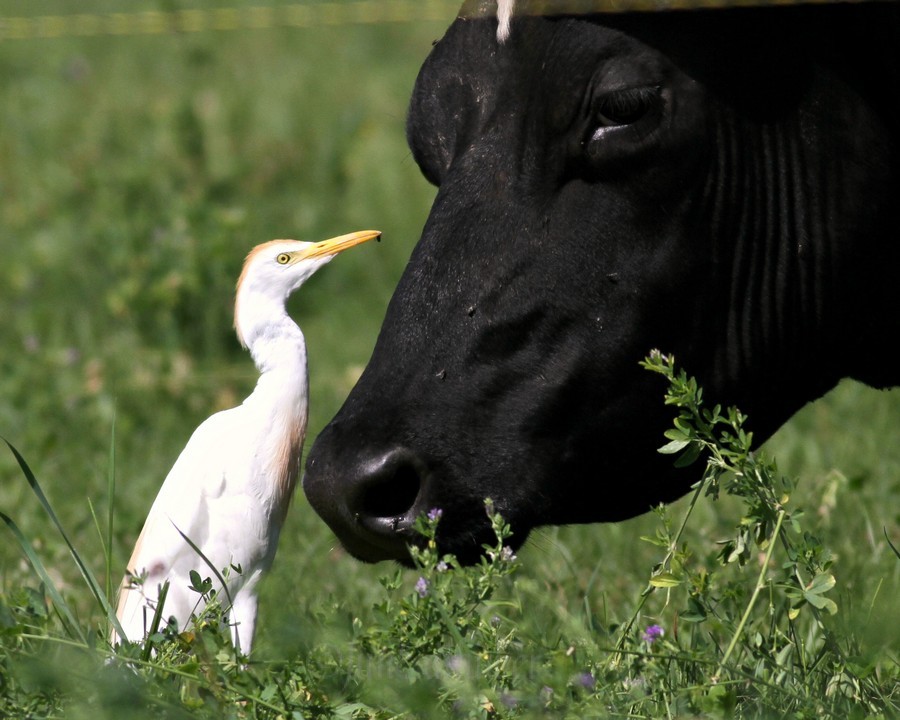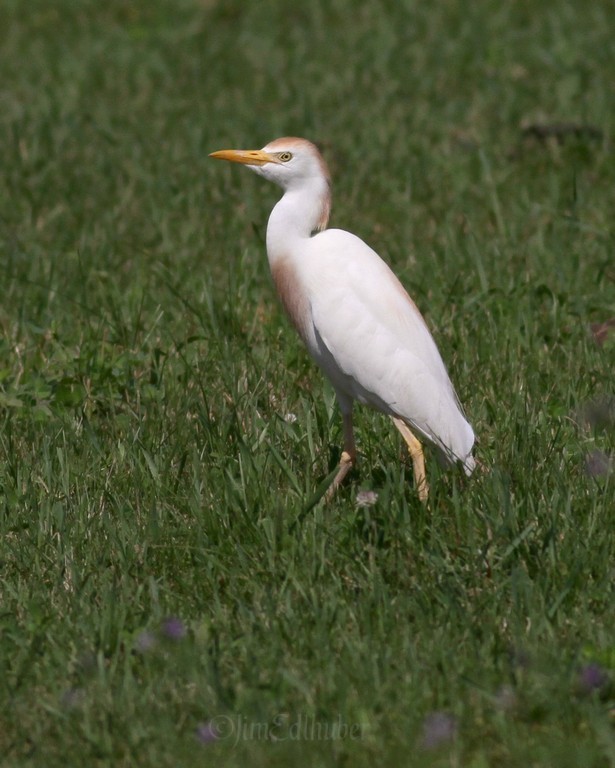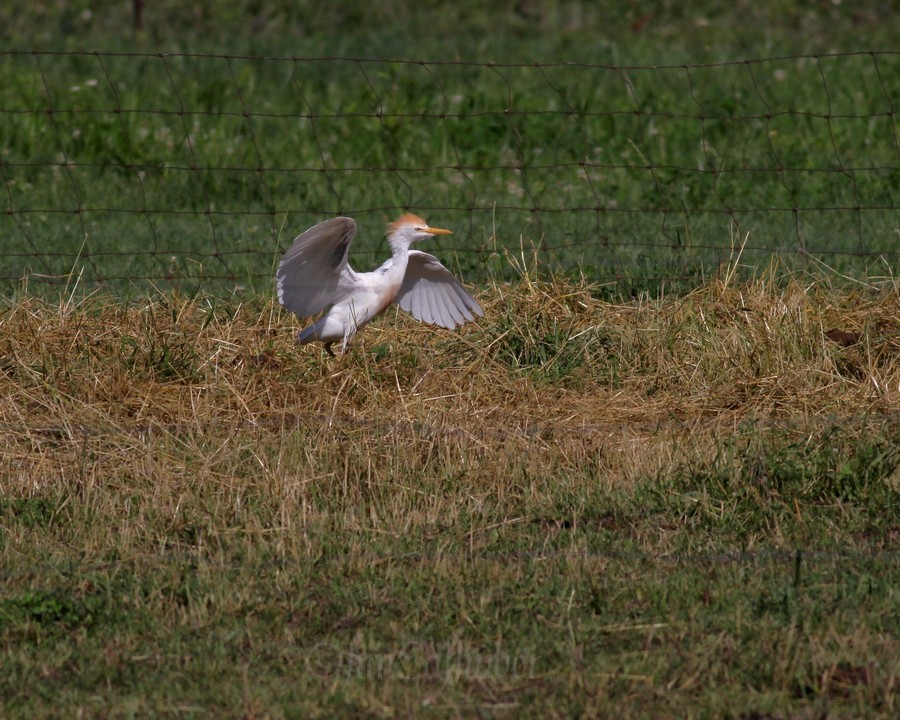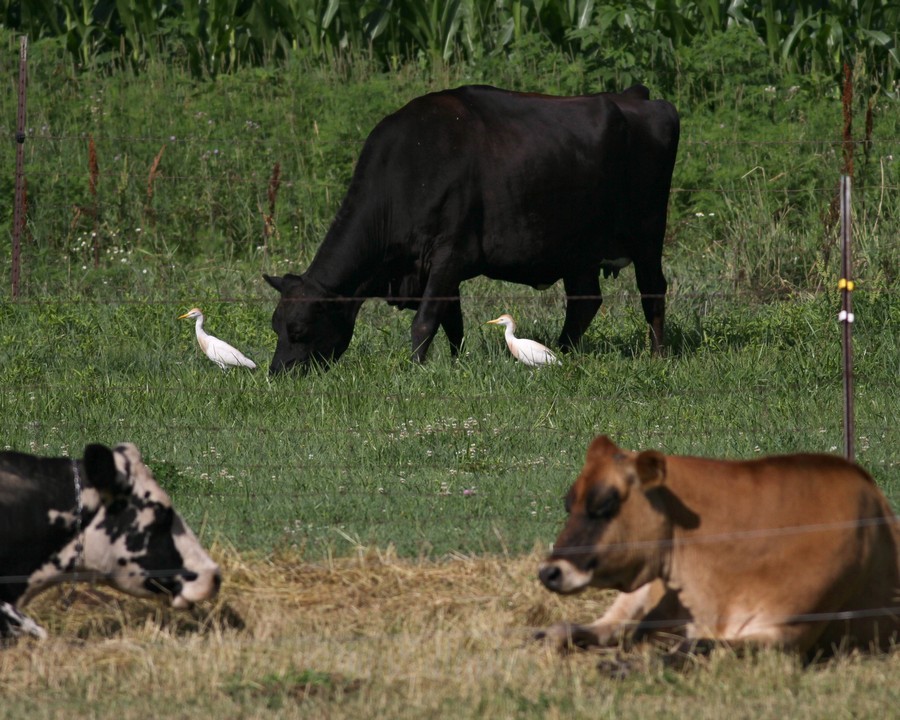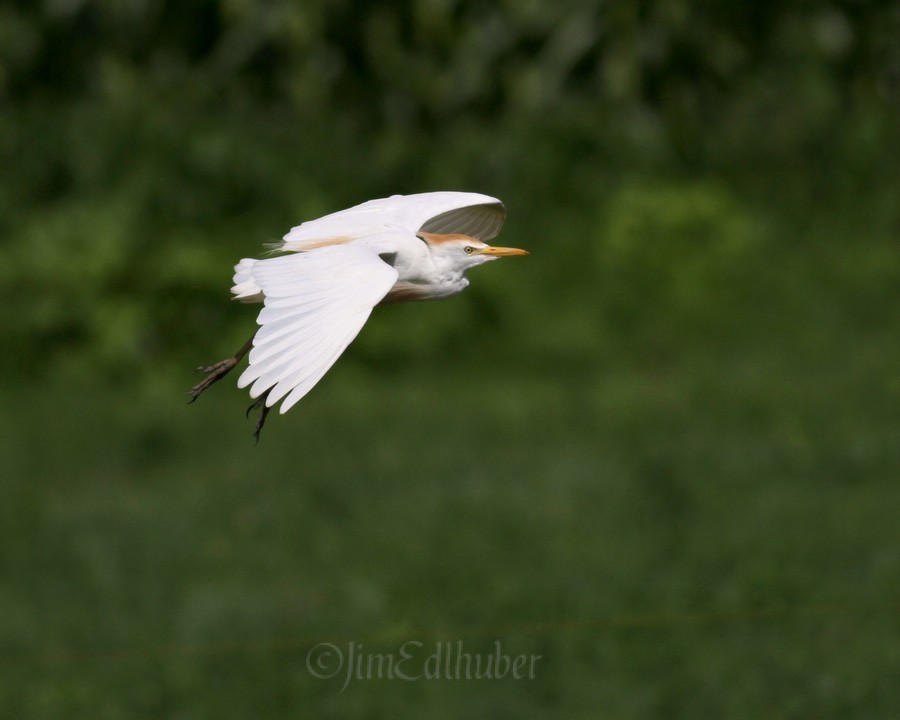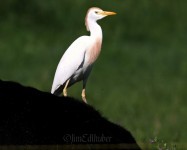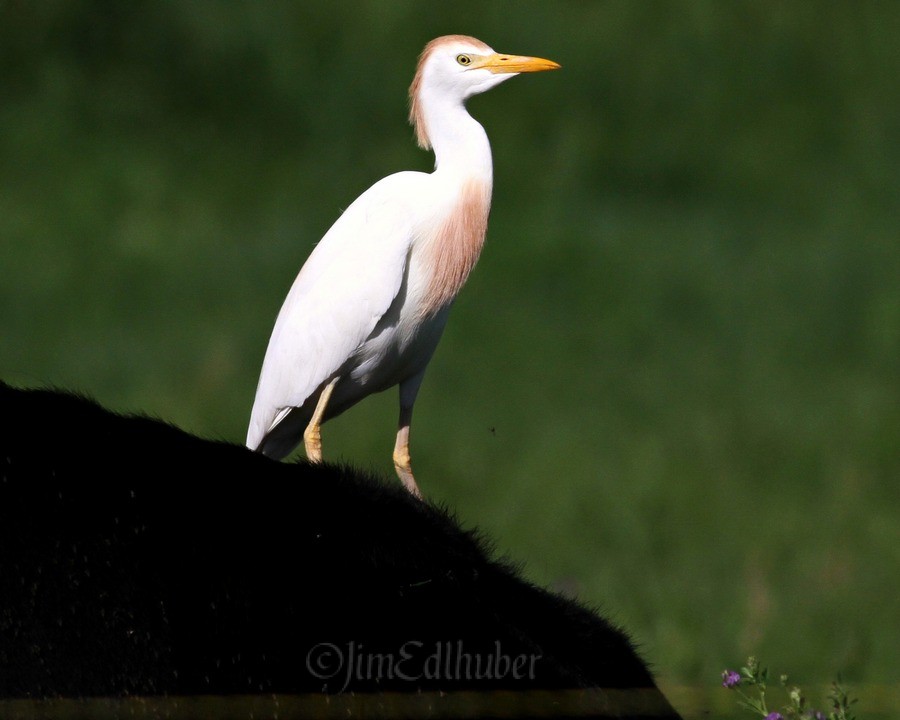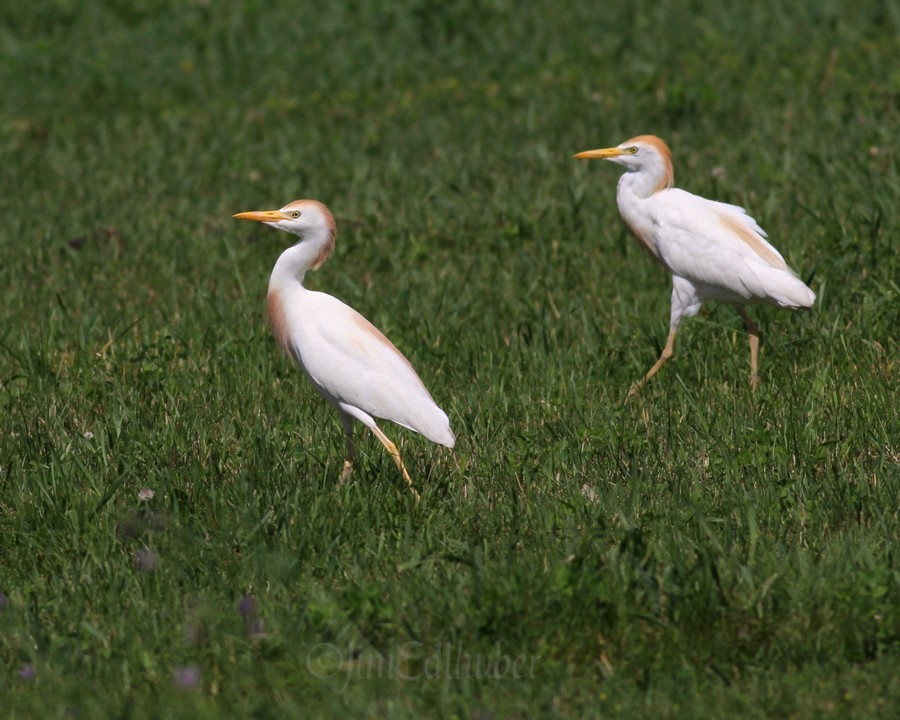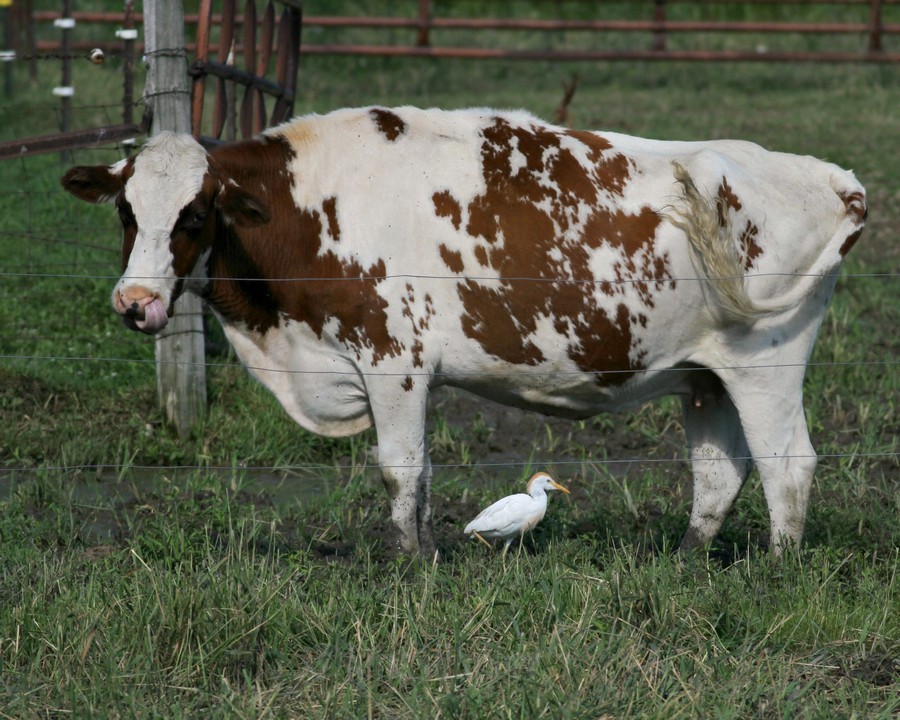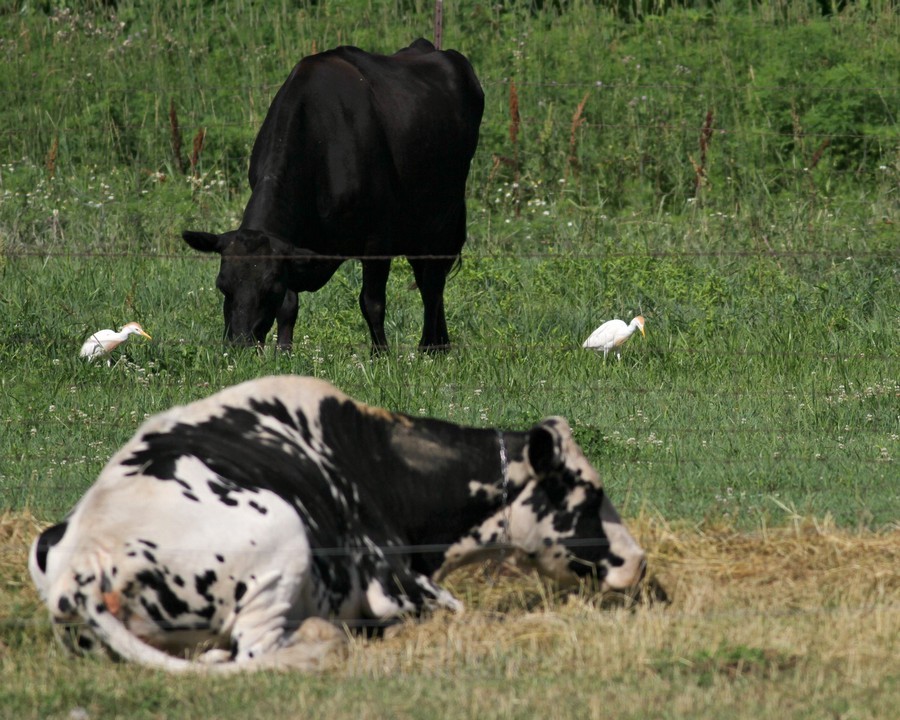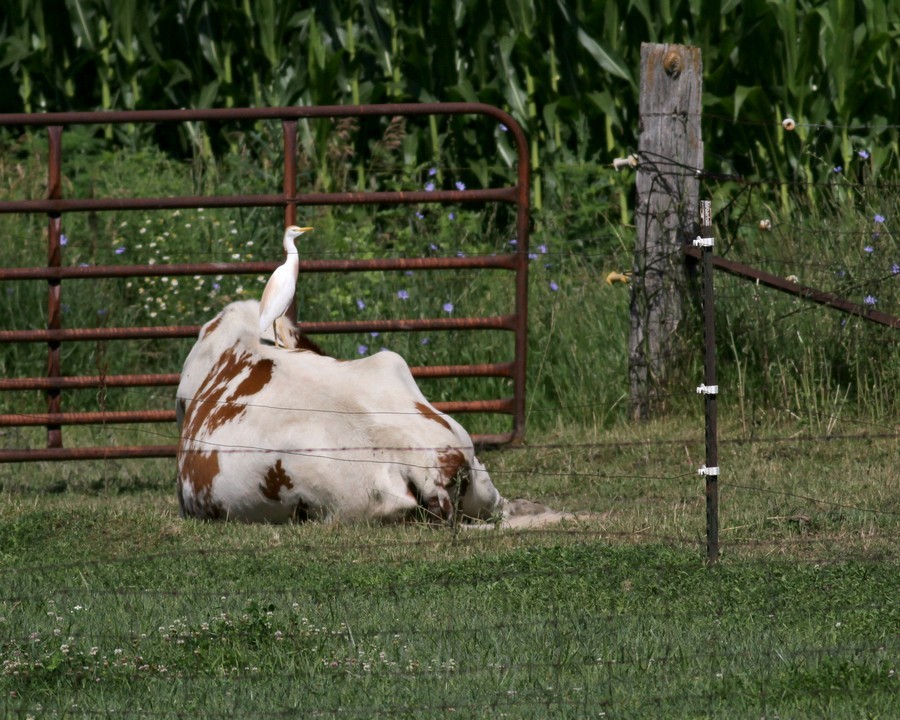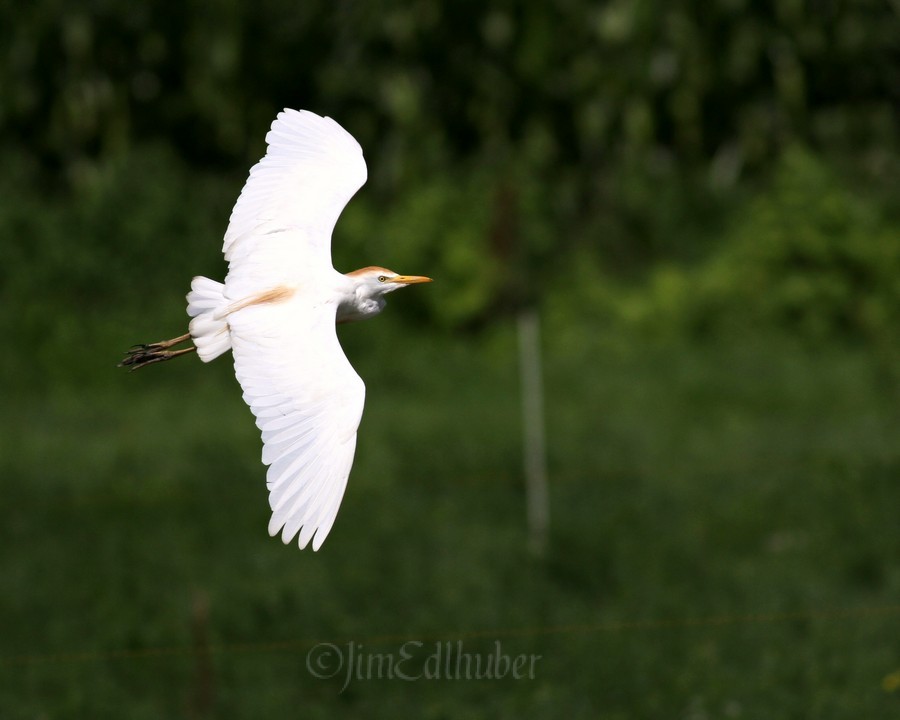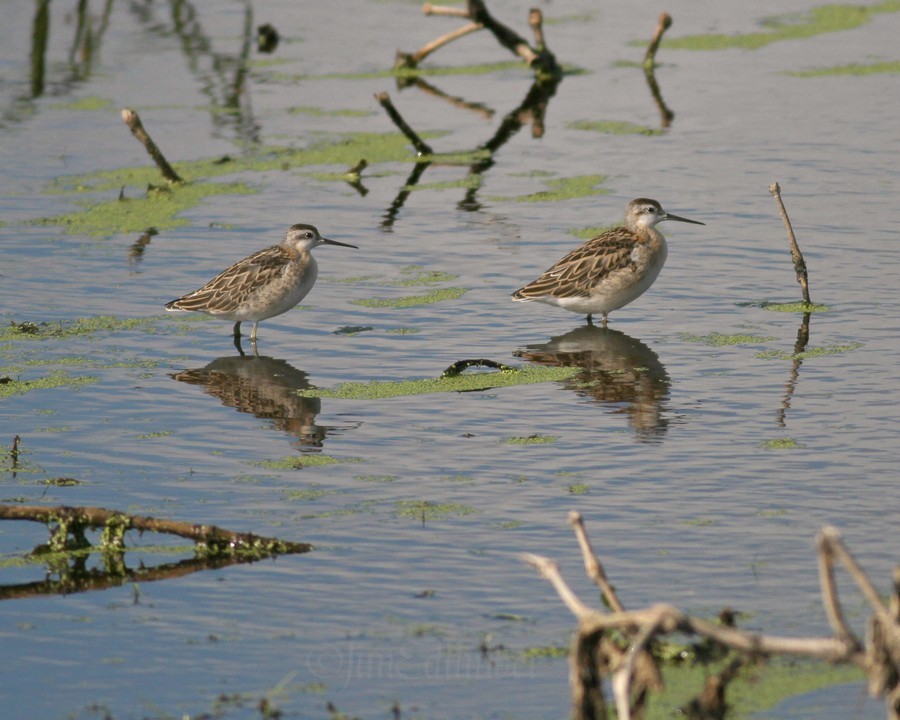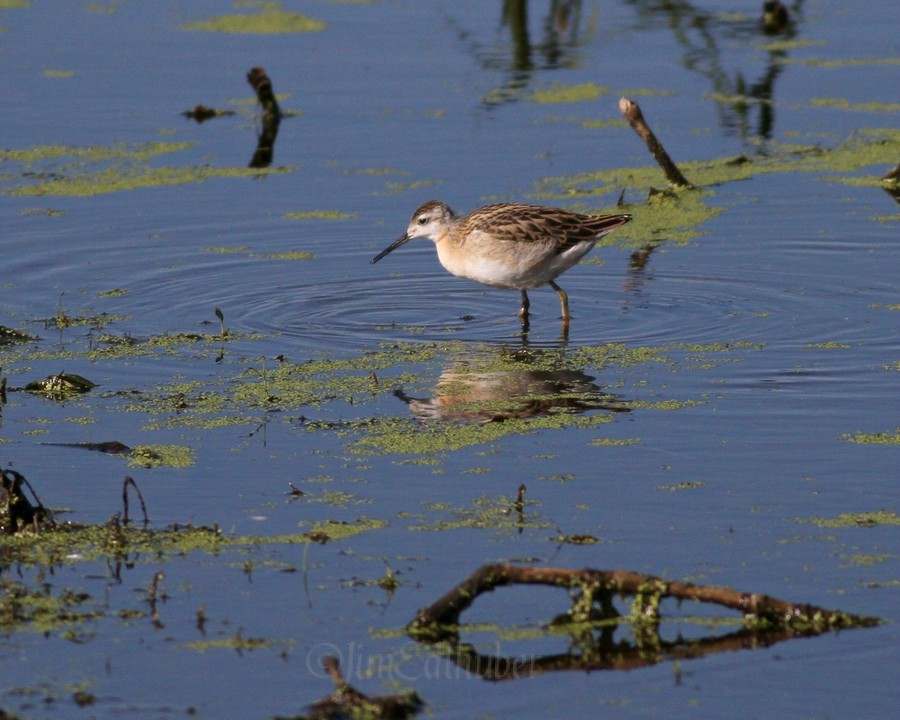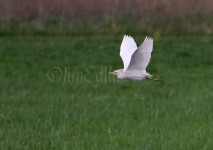
Cattle Egret at the Fox River Parkway South in Waukesha County Wisconsin. With heavy rains last night water is just about everywhere in the county. The low area at the park that holds water in wet times of the year was a great place for this species to spend some time to rest and hopefully find some food. The Cattle Egret originated in Africa, appeared in North America in 1953 and spread across the entire continent. Thanks to all birders who got the word out about the presence of the Cattle Egret, an uncommon visitor to this part of the state. A few distant images taken there today in the late afternoon May 13, 2014.
Cattle Egret
Binomial name: Bubulcus ibis
Category: Bitterns, Herons, and Allies
Description: White plumage with cream-colored feathers on its chest, head, and tail during breeding season. Yellow bill and gray legs.
Size: 18”-22” long, 35” – 38” wingspan
Weight: 9.5 oz. – 18 oz.
Habitat: Pastures, grasslands, meadows, and wetlands
Diet: Insects (grasshoppers and crickets), spiders, amphibians, and worms
Nesting: Cattle Egrets nest in colonies, typically near a body of water. Both males and females build the nest; males collect twigs and sticks while the female assembles them into jumbled pile in a tree or shrub. It is common for these birds to steal nest materials from others. The female will lay 1 to 5 eggs and raise 1 brood each season. Both parents incubate the eggs. Chicks are born with down feathers but are still helpless. The fledglings leave the nest after about 45 days.
Notes: Cattle Egrets are appropriately named as they tend to forage for food near cattle or other large, grazing animals. They eat insects and other vertebrates spread by these animals. The birds have also been known to forage behind farm machinery. Farmers may welcome these birds to their pastures as Cattle Egrets will help control fly and tick populations among cattle.

